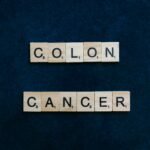Human papillomavirus (HPV) is a common sexually transmitted infection that can lead to several types of cancer, including cervical cancer. The development of HPV vaccines has revolutionized cancer prevention efforts, offering a powerful tool to reduce the incidence of HPV-related cancers. HPV vaccination has been shown to significantly reduce the risk of cervical cancer and other HPV-associated cancers, making it a crucial component of comprehensive cancer prevention strategies.
The HPV vaccine works by protecting against specific high-risk strains of the virus that are most commonly associated with cancer development. By preventing infection with these strains, the vaccine can effectively lower the risk of developing HPV-related cancers later in life. This approach represents a shift from traditional cancer prevention methods, focusing on proactive immunization rather than solely relying on screening and early detection.
While the HPV vaccine has proven highly effective, it is important to note that it does not protect against all strains of the virus. Regular cervical cancer screenings remain an essential part of a comprehensive prevention strategy, even for those who have been vaccinated. Healthcare providers recommend that individuals discuss their vaccination options and screening schedules with their doctors to ensure optimal protection against HPV-related cancers.
Key Takeaways
- HPV vaccination significantly reduces the risk of cervical cancer and other HPV-related cancers.
- The vaccine works by preventing infection with high-risk HPV strains commonly associated with cancer.
- Regular cervical cancer screenings remain important, even for vaccinated individuals.
Understanding HPV and Its Link to Cancer
Human Papillomavirus (HPV) is a common virus that can lead to various types of cancer. It’s crucial to understand how HPV spreads, its different strains, and the importance of early detection in preventing cancer development.
The Basics of Human Papillomavirus
HPV is a viral infection that affects millions of people worldwide. There are over 200 types of HPV, some of which can cause health issues ranging from minor to severe. The virus primarily infects the skin and mucous membranes.
Most HPV infections are asymptomatic and clear on their own. However, some persistent infections can lead to cellular changes that may progress to cancer. HPV is responsible for nearly all cases of cervical cancer and is associated with other cancers as well.
HPV spreads through skin-to-skin contact, most commonly during sexual activity. This makes it one of the most common sexually transmitted infections.
Different HPV Types and Their Risks
HPV types are categorized based on their cancer-causing potential:
- Low-risk types: These rarely cause cancer but may lead to genital warts.
- High-risk types: These can cause cellular changes that may progress to cancer.
High-risk HPV types are associated with various cancers, including:
- Cervical cancer
- Anal cancer
- Penile cancer
- Vaginal and vulvar cancers
- Oropharyngeal cancer (back of the throat, including the base of the tongue and tonsils)
HPV types 16 and 18 are responsible for about 70% of cervical cancers worldwide. Other high-risk types include 31, 33, 45, 52, and 58.
HPV Transmission and Early Detection
HPV transmission occurs primarily through direct skin-to-skin contact during sexual activity. This includes vaginal, anal, and oral sex. The virus can also spread through non-penetrative sexual activities.
Condoms provide some protection but don’t fully prevent transmission, as HPV can infect areas not covered by condoms. Early detection is crucial in preventing HPV-related cancers.
Regular screenings, such as Pap smears and HPV tests, can detect cellular changes before they become cancerous. For cervical cancer, these screenings have significantly reduced incidence and mortality rates.
Vaccination is a powerful tool for prevention. HPV vaccines protect against the most common high-risk types, significantly reducing the risk of HPV-related cancers.
The Role of Vaccination in Cancer Prevention
Vaccination plays a crucial role in preventing certain types of cancer, particularly those caused by human papillomavirus (HPV). By protecting against viral infections, vaccines can significantly reduce the risk of developing cancer later in life.
HPV Vaccines: An Overview
HPV vaccines are designed to prevent infection from high-risk strains of human papillomavirus. The most widely used vaccines are Gardasil 9 and Cervarix. Gardasil 9, a 9-valent HPV vaccine, protects against nine HPV types responsible for various cancers and genital warts.
These vaccines work by stimulating the immune system to produce antibodies against specific HPV strains. When exposed to the virus, the body can quickly recognize and neutralize it, preventing infection and subsequent cellular changes that may lead to cancer.
The FDA has approved HPV vaccines after rigorous testing for safety and efficacy. Millions of doses have been administered worldwide, with extensive data supporting their safety profile.
Vaccination Recommendations and Schedule
The Centers for Disease Control and Prevention (CDC) and the Advisory Committee on Immunization Practices recommend routine HPV vaccination for adolescents. The ideal age for vaccination is 11-12 years, before potential exposure to the virus.
For individuals starting the series before age 15, a two-dose schedule is recommended. The second dose should be given 6-12 months after the first. Those starting at age 15 or older require three doses, with the second dose given 1-2 months after the first, and the third dose 6 months after the first.
Catch-up vaccination is available for adults up to age 26. Some adults aged 27-45 may also benefit from vaccination after discussing with their healthcare provider.
Effectiveness and Lasting Protection
HPV vaccines have demonstrated high effectiveness in preventing infections and precancerous lesions. Studies show that the vaccines can prevent up to 90% of HPV-related cancers when given before exposure to the virus.
The protection provided by HPV vaccines is long-lasting. Research indicates that immunity remains strong for at least 10 years after vaccination, with no evidence of waning protection over time.
Vaccination programs have led to significant reductions in HPV infections and related precancerous lesions in vaccinated populations. This success translates to lower rates of cervical, anal, and other HPV-related cancers.
While HPV vaccines are highly effective, they do not protect against all HPV types or treat existing infections. Regular cancer screenings remain important for early detection and prevention.
Eligibility and Safety of HPV Vaccination
HPV vaccination is a crucial tool in cancer prevention, with specific guidelines for eligibility and established safety protocols. Understanding who should receive the vaccine and addressing safety concerns are essential for effective implementation.
Target Demographics for Vaccination
HPV vaccination is recommended for all children, typically starting at age 11 or 12. However, the vaccine can be administered as early as age 9.
For teens and young adults who didn’t get vaccinated on schedule, catch-up vaccination is recommended up to age 26. Adults ages 27 through 45 may also benefit from HPV vaccination, though they should consult their healthcare provider to determine if it’s appropriate.
It’s important to note that the vaccine is most effective when given before potential exposure to HPV through sexual activity.
• Key eligibility groups:
- Children aged 9-12 (ideal age)
- Teens and young adults up to age 26
- Adults 27-45 (case-by-case basis)
Addressing Vaccine Safety Concerns
The safety of HPV vaccines has been thoroughly studied and established through extensive clinical trials and ongoing monitoring. Millions of doses have been administered worldwide with a strong safety record.
Common misconceptions about vaccine safety often stem from misinformation or lack of understanding about vaccine development and testing processes. Healthcare providers play a crucial role in addressing these concerns by providing accurate, evidence-based information to patients and their families.
It’s important to emphasize that the benefits of HPV vaccination in preventing cancer far outweigh any potential risks.
Understanding Side Effects and Adverse Events
Like all medical interventions, HPV vaccines can cause side effects, though most are mild and short-lived. Common side effects include:
- Pain, redness, or swelling at the injection site
- Fever
- Headache
- Nausea
- Dizziness
In rare cases, more serious adverse events may occur. Syncope (fainting) has been reported, particularly in adolescents. To mitigate this risk, patients are advised to sit or lie down for 15 minutes after vaccination.
Severe allergic reactions are extremely rare but possible with any vaccine. Healthcare providers are prepared to manage such events in the unlikely case they occur.
It’s crucial for patients to report any unusual symptoms to their healthcare provider promptly. Ongoing surveillance helps ensure the continued safety of HPV vaccines.
Impact of HPV Vaccination on Public Health
HPV vaccination has revolutionized cancer prevention efforts worldwide. The widespread implementation of immunization programs has led to significant reductions in HPV infections and related diseases, profoundly impacting public health outcomes.
Vaccination Rates and Community Immunity
HPV vaccination rate varies across different regions and populations. In the United States, the Centers for Disease Control and Prevention (CDC) recommends HPV vaccination for all adolescents starting at age 11 or 12. As of 2023, approximately 75% of adolescents have received at least one dose of the vaccine.
Higher vaccination rates contribute to community immunity, also known as herd immunity. This phenomenon occurs when a significant portion of the population becomes immune to the virus, reducing its spread and protecting even unvaccinated individuals.
Factors influencing vaccination rates include:
- Access to healthcare
- Parental education and awareness
- Healthcare provider recommendations
- Cultural beliefs and attitudes
Reduction of Disease Burden and Cancers
HPV vaccination has shown remarkable efficacy in reducing the incidence of HPV-related diseases and cancers. The vaccine targets high-risk HPV strains responsible for various cancers, including cervical, vaginal, vulvar, anal, and oropharyngeal cancers.
Key impacts include:
- Cervical cancer: Studies show up to 90% reduction in HPV infections that cause cervical cancer.
- Other HPV-related cancers: Significant decreases in anal, vaginal, and oropharyngeal cancers.
- Genital warts: Near elimination in vaccinated populations.
The American Cancer Society projects that widespread HPV vaccination could prevent over 90% of HPV-related cancers. This reduction in disease burden not only improves individual health outcomes but also lessens the strain on healthcare systems and reduces associated economic costs.
Additional Considerations in HPV Prevention
HPV prevention extends beyond vaccination, encompassing a range of protective behaviors and collaborative efforts with healthcare professionals. These additional measures play a crucial role in reducing HPV transmission and associated cancer risks.
Beyond Vaccination: Protective Behaviors and Practices
Condom use during sexual activity significantly reduces the risk of HPV transmission. While not 100% effective, condoms provide a barrier against skin-to-skin contact in genital areas.
Regular cervical cancer screenings are essential for early detection of precancerous changes. Women should follow recommended screening schedules, even if vaccinated.
Limiting sexual partners decreases exposure to different HPV strains. This practice is particularly important for young people, who are at higher risk of infection.
Abstaining from sexual activity is the most effective way to prevent HPV transmission. However, this may not be realistic for many individuals.
Maintaining good genital hygiene can help reduce the risk of HPV-related complications. This includes proper cleaning and avoiding irritants that may increase susceptibility to infection.
Collaboration with Healthcare Professionals
Regular check-ups with healthcare providers are crucial for monitoring HPV-related health concerns. These visits allow for early detection of genital warts, precancers, and other HPV-associated conditions.
Doctors can provide personalized advice on HPV prevention based on individual risk factors. This may include recommendations for vaccination timing, especially for those between ages 9 and 26.
Healthcare professionals can address concerns about vaccine safety and efficacy. They can explain potential side effects like headaches and discuss the vaccine’s role in preventing cervical, anal, and vaginal cancers.
Open communication with healthcare providers is essential for discussing sexual health, including HPV risks. This dialogue can help individuals make informed decisions about protective measures and screening.
Medical professionals can provide guidance on HPV prevention during pregnancy. They can explain the risks of respiratory papillomatosis in infants born to mothers with active HPV infections.
Frequently Asked Questions
The HPV vaccine plays a crucial role in cancer prevention. Many individuals have questions about its efficacy, safety, and recommendations. Let’s address some common inquiries to provide clarity on this important health topic.
What are the potential side effects associated with the HPV vaccine?
Most side effects of the HPV vaccine are mild and short-lived. Common reactions include pain, redness, or swelling at the injection site. Some individuals may experience headaches, fatigue, or mild fever.
Serious side effects are rare. Allergic reactions can occur but are extremely uncommon. Healthcare providers monitor patients for 15 minutes after vaccination to ensure safety.
How does the HPV vaccine contribute to cancer prevention, even after exposure to the virus?
The HPV vaccine is most effective when given before exposure to the virus. However, it can still offer protection against strains an individual hasn’t encountered. The vaccine stimulates the immune system to recognize and fight HPV infections.
Even if someone has been exposed to one strain, the vaccine can protect against others. This multi-strain protection enhances overall cancer prevention efforts.
What are the expert medical opinions regarding the use of the HPV vaccine?
Medical experts widely support the use of the HPV vaccine. Organizations such as the World Health Organization, Centers for Disease Control and Prevention, and American Cancer Society strongly recommend vaccination.
Experts emphasize the vaccine’s role in cancer prevention and its safety profile. They advocate for widespread immunization to reduce HPV-related cancers globally.
Is there a specific age beyond which the HPV vaccine is not typically recommended?
The HPV vaccine is most commonly recommended for adolescents aged 11-12. However, it can be given as early as age 9 and up to age 26 for those who haven’t been vaccinated.
For adults aged 27-45, the decision to vaccinate is made on an individual basis. Factors such as risk of new HPV exposure and potential benefits are considered.
What is the effectiveness of the HPV vaccine in preventing cervical cancer?
The HPV vaccine is highly effective in preventing cervical cancer. Studies show it can prevent up to 90% of cervical cancers caused by HPV.
Vaccination, combined with regular cervical cancer screenings, significantly reduces the risk of developing cervical cancer. The vaccine targets the most common cancer-causing HPV strains.
Can cervical cancer still occur despite receiving the HPV vaccine, and under what circumstances?
While the HPV vaccine is highly effective, it doesn’t provide 100% protection against all cervical cancers. Cervical cancer can still occur in vaccinated individuals under certain circumstances.
The vaccine doesn’t protect against all HPV strains that can cause cancer. Additionally, if someone was infected with HPV before vaccination, the vaccine may not prevent cancer development from that pre-existing infection.
Regular cervical cancer screenings remain important, even for vaccinated individuals. These screenings can detect precancerous changes early, allowing for prompt treatment.





